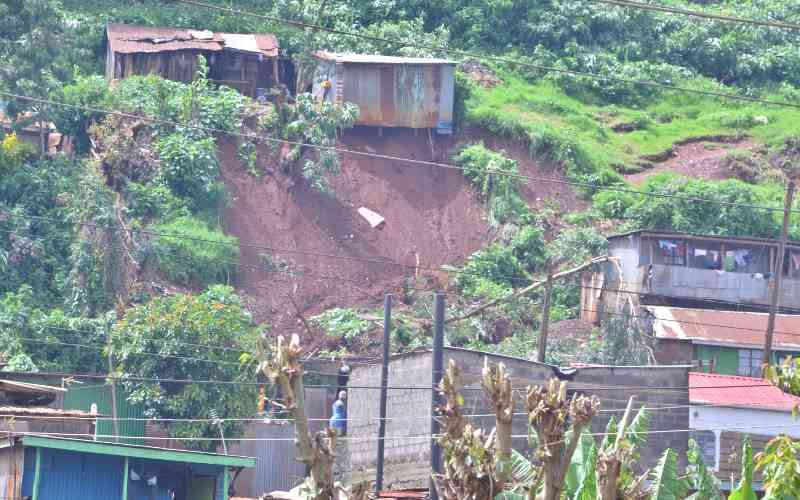By ALLY JAMAH
Inside the Karura Forest just outside Nairobi, at the satellite offices of the Kenya Forestry Research Institute (Kefri) is a new Sh18 million machine that promises a bright new dawn for Kenya’s dormant bamboo industry. In this machine, big money beckons.
Under the skilled hands of Kefri workers, the machine turns hollow bamboo stems, into clean, finished pieces of timber that could be turned into a variety of high-value products such as furniture, curtains and crockery, among other exquisite products.
Boost to industry
“This is a special machine that is used to manufacturer many bamboo products for export. It is a big boost to our nascent bamboo industry,” says a jovial Gordon Sigu, the national project Coordinator of Bamcraft, a project that develops bamboo products.
Indeed, at Kefri offices in Karura Forest is an attractive showcase of bamboo products including heavy-duty beds and tables. A similar machine has been installed in Londiani.
Before the machine was introduced, processing bamboo was limited to using knives and hacksaws to produce just a handful of rudimentary products — baskets and unprocessed bamboo furniture.
“The new machine enables us to do much more with bamboo than previously possible. Now we can do floorboards, packaging products and window blinds, among many other things,” he says.
Sigu says many private sector people are strongly interested in purchasing the machine and developing a wide variety of bamboo products for local consumption and export.
“Once this machine has been taken up by many investors, then we can begin to see the revolution in bamboo industry. It will create many jobs and huge wealth. This is just the beginning,” he adds enthusiastically.
Sigu explains that small-scale farmers can purchase parts of the machines to produce such items like toothpicks and incense sticks, the bulk of which is currently imported from China and costs the country millions of shillings in valuable foreign exchange every year.
Supporting millions
According to the United Nations Industrial Development Organisation representative in Kenya Mr Lars Ola, value-addition of bamboo is limited in Kenya and the economic value of the grass is not exploited in Kenya as much as it should.
“Bamboo is termed as the ‘poor man’s timber’ and needs to be turned into a cash crop to help Kenyans lift themselves out of poverty,” he says.
Currently, the bamboo industry in Kenya is still a toddler, compared with countries in Asia where the grass is supporting millions of livelihoods and generating huge wealth in terms of foreign exchange.
Stay informed. Subscribe to our newsletter
“We need to invest heavily in bamboo since the industry can generate wealth and jobs for many Kenyans,” says Ola.
Bamboo use in Kenya is only limited to fencing, house construction, water harvesting, cottage industries dealing with matchsticks, baskets, tooth-picks, various other handicrafts and in agricultural farming, as props for supporting horticultural crops.
Vibrant industry
He said other countries in Asia have very vibrant bamboo industries worth billions of shillings and employing thousands of people, lifting many out of poverty. According to the UN agency, the global bamboo industry is worth at least Sh360 billion.
Among African countries, Ethiopia has a well-developed bamboo industry exporting a variety of products and earning that country millions of shillings of foreign exchange annually.
Sigu explains that bamboo used to be big business in Kenya just before the Government imposed a ban on harvesting the cane in the country’s protected forests in 1986.
That move sent the industry into a freeze since very little bamboo existed outside the gazetted forests to support a vibrant industry.
A factory based in Nakuru, Kapi Limited, used to export bamboo by-products such as incense sticks, products which are currently imported from India and China.
Approximately 150,000 hectares of indigenous bamboo currently grows in areas such as Mt Kenya, Aberdares, Mau Escarpment, Cherang’anyi Hills and Mt Elgon.
But that is set to change as the Government has begun reviewing the possibility of lifting the ban. Forestry Assistant Minister Josephat Nanok, told The Standard that the plan to lift the ban is on course.
“The good thing with bamboo is that once cut it regenerates fast. It grows up to 20 metres In three months only and harvesting it wouldn’t destroy forest cover,” he said.
 The Standard Group Plc is a
multi-media organization with investments in media platforms spanning newspaper
print operations, television, radio broadcasting, digital and online services. The
Standard Group is recognized as a leading multi-media house in Kenya with a key
influence in matters of national and international interest.
The Standard Group Plc is a
multi-media organization with investments in media platforms spanning newspaper
print operations, television, radio broadcasting, digital and online services. The
Standard Group is recognized as a leading multi-media house in Kenya with a key
influence in matters of national and international interest.
 The Standard Group Plc is a
multi-media organization with investments in media platforms spanning newspaper
print operations, television, radio broadcasting, digital and online services. The
Standard Group is recognized as a leading multi-media house in Kenya with a key
influence in matters of national and international interest.
The Standard Group Plc is a
multi-media organization with investments in media platforms spanning newspaper
print operations, television, radio broadcasting, digital and online services. The
Standard Group is recognized as a leading multi-media house in Kenya with a key
influence in matters of national and international interest.






